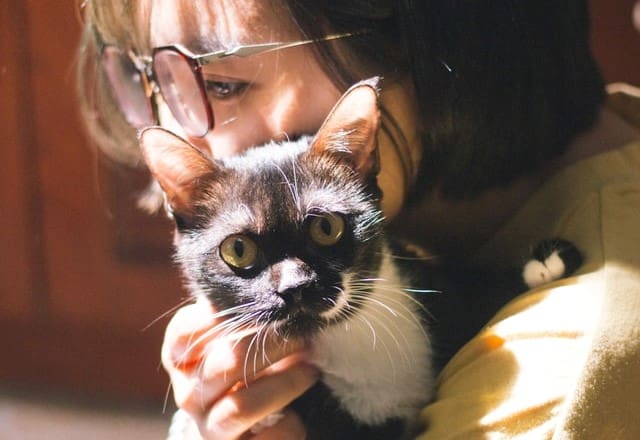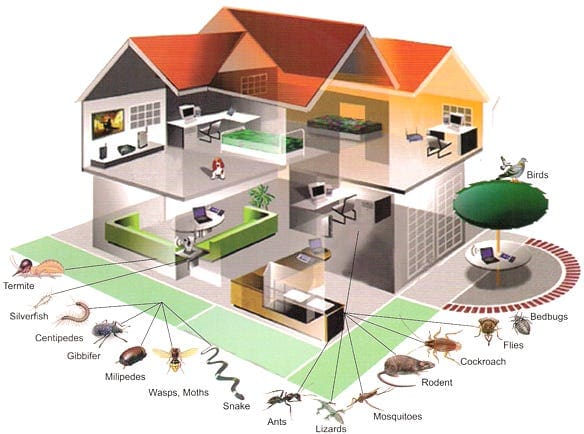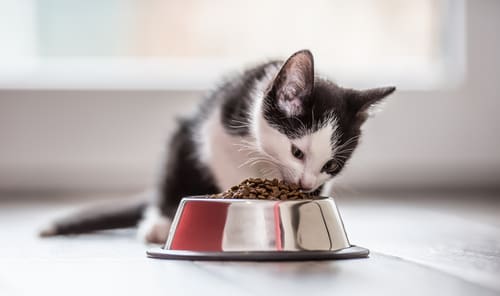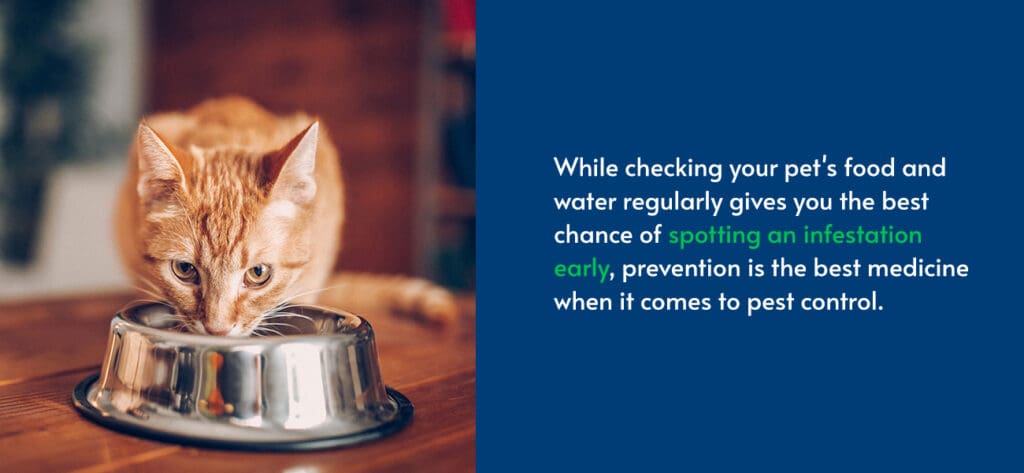Are you looking for effective pest control solutions that also involve your adorable feline companion? Look no further! In this article, we will explore the important role of cats in pest control and provide you with some valuable safety tips to ensure a harmonious coexistence between your furry friend and the pests they help eliminate. Join us as we discover how these cute and cunning creatures can lend a helping paw in keeping your home pest-free!
1. Benefits of Using Cats for Pest Control
1.1 Natural Pest Deterrent
When it comes to pest control, cats are the ultimate natural deterrent. Their mere presence in an area can help keep pests at bay. Cats have a strong hunting instinct and are known to chase and catch rodents, insects, and other small pests. Their scent alone is often enough to discourage pests from entering your home or garden. Unlike chemical-based pest control methods, cats offer a safe and eco-friendly solution that is in harmony with nature.
1.2 Cost-effective Solution
Using cats for pest control is also a cost-effective approach. Owning a cat may require some initial investment in terms of food, litter, and basic supplies, but compared to professional pest control services or the constant purchase of chemical-based pest control products, the cost of cat ownership is significantly lower. Cats are also known for their self-sufficiency, making them low-maintenance pest control partners.
1.3 Efficient Hunters
Cats are renowned for their hunting skills, making them highly efficient pest control agents. Their agility, quick reflexes, and keen senses allow them to track and capture pests with ease. Cats have evolved over centuries to become expert hunters, honing their skills to perfection. Whether it’s chasing down a mouse or pouncing on a pesky insect, cats exhibit remarkable precision and speed, making them invaluable allies in the battle against pests.
2. Choosing the Right Cat for Pest Control
2.1 Breed Considerations
While all cats have a natural hunting instinct, certain breeds are known to excel in pest control. Breeds such as the Maine Coon, Siamese, and Abyssinian are renowned for their hunting prowess. These breeds often possess the athleticism and agility required to effectively track and capture pests. However, it’s important to note that breed is not the only factor to consider when choosing a cat for pest control.
2.2 Temperament
A cat’s temperament plays a crucial role in their effectiveness as pest control agents. Cats with a more independent and adventurous nature are more likely to actively engage in hunting and pest control activities. It’s important to spend time observing a cat’s behavior and temperament before making a decision. Look for cats that display curiosity, playfulness, and a strong desire to explore their surroundings.
2.3 Age and Health
When selecting a cat for pest control, age and health should also be taken into consideration. Kittens may still be developing their hunting skills and may require more time and training to effectively control pests. Older cats, on the other hand, may have declining health or reduced agility, which can affect their ability to hunt. Opting for a healthy adult cat with a proven hunting instinct can provide the best balance between effectiveness and longevity.

3. Training Your Cat for Pest Control
3.1 Encouraging Hunting Instincts
While cats have a natural ability to hunt, it’s still important to encourage and nurture their hunting instincts. Provide them with toys and interactive play sessions that mimic the movements of common pests. This will help sharpen their hunting skills and keep them engaged in pest control activities. Additionally, consider incorporating puzzle feeders or hiding small treats in challenging locations to stimulate their problem-solving abilities.
3.2 Introducing Cats to the Outdoors
If you plan on allowing your cat to roam outdoors for pest control purposes, it’s essential to introduce them to the outdoors gradually and with caution. Start by allowing supervised outdoor time in a controlled environment, such as a secure garden or enclosed space. Monitor their behavior and ensure they are comfortable and confident in their surroundings. Gradually increase their outdoor access as they become more experienced and confident hunters.
3.3 Reinforcing Gaps and Crevices
Teach your cat to target specific areas of your home or garden where pests are most likely to enter. By reinforcing gaps, crevices, and entry points, you can enhance your cat’s effectiveness as a pest control agent. Make sure these areas are inaccessible to the pests but easily accessible to your cat. This will allow them to patrol and protect these vulnerable points, reducing the risk of pests infiltrating your space.
4. Safety Precautions for Cats During Pest Control
4.1 Avoid Toxic Pest Control Methods
When using cats for pest control, it’s important to prioritize their safety. Avoid using toxic pest control methods such as chemical sprays, baits, or traps that can potentially harm your feline companion. Opt for natural and pet-friendly pest control alternatives, such as essential oil-based repellents or diatomaceous earth, which are effective against pests without posing a risk to your cat’s health.
4.2 Regular Vaccinations and Check-ups
To ensure the well-being of your cat, it’s crucial to keep up with their vaccinations and routine check-ups. Regular visits to the veterinarian will help prevent and detect any health issues that may arise. Additionally, consult with your veterinarian to ensure your cat is protected against diseases or parasites that they may encounter while engaging in pest control activities.
4.3 Protecting from Predators
While cats are skilled hunters, they too can become prey to larger predators, such as coyotes or birds of prey. If you live in an area with known predators, take precautions to protect your cat during their pest control duties. Keep them indoors during times when predators are most active, or supervise their outdoor activities to ensure their safety. Providing a secure outdoor enclosure can also allow them to enjoy the outdoors while remaining protected.

5. Creating a Cat-friendly Environment
5.1 Providing Food and Shelter
Creating a cat-friendly environment is essential for ensuring their well-being and encouraging their pest control efforts. Ensure they have access to fresh water and a balanced diet to maintain their energy levels. Provide them with a comfortable and designated resting area, such as a cozy cat bed. This will help them recharge between their hunting sessions and feel secure in their environment.
5.2 Creating Climbing and Hiding Places
Cats are natural climbers and love to have vertical spaces to explore. Install cat trees, shelves, or perches that allow them to climb and survey their surroundings. These elevated spaces not only provide environmental enrichment but also give them a vantage point to spot potential pests. Additionally, create hiding places or cat tunnels where they can retreat and observe their surroundings discreetly.
5.3 Litter Box Placement
Proper litter box placement is essential for creating a cat-friendly environment. Ensure the litter box is easily accessible and placed in a quiet area where your cat feels comfortable and undisturbed. Keeping the litter box clean and providing multiple litter boxes in different areas of your home will further encourage your cat’s natural instincts and promote good litter box habits.
6. Monitoring and Supervising Cats during Pest Control
6.1 Regular Supervision
While cats are independent creatures, it’s important to regularly supervise them during their pest control activities. Monitor their behavior, ensure they are safely navigating their environment, and provide any necessary guidance. This will allow you to address any potential risks or issues promptly, ensuring their safety and the success of their pest control efforts.
6.2 Monitoring for Signs of Illness
Closely monitoring your cat for any signs of illness or injuries is crucial during their pest control duties. Cats can be exposed to potential hazards, such as bites or scratches from pests, which can lead to infection or transmission of diseases. Regularly check for any changes in their behavior, appetite, or physical appearance. If you notice any concerning symptoms, consult with a veterinarian promptly.
6.3 Keeping Cats away from Traps
If you choose to employ traps as part of your pest control strategy, it’s important to keep your cat away from them. Traps can pose a risk of injury to your cat if they accidentally trigger them. Place traps in areas that are inaccessible to cats, such as high shelves or behind furniture. Regularly check and reset the traps to avoid any unintended harm to your feline companion.

7. Balancing Pest Control Methods with Cat Safety
7.1 Integrated Pest Management Approach
Finding the right balance between effective pest control and cat safety involves adopting an integrated pest management (IPM) approach. IPM involves combining multiple pest control strategies to minimize pests while minimizing risks to your cat. This approach may include using barriers, natural repellents, and targeted treatments in conjunction with the presence of your cat for enhanced pest control.
7.2 Consulting with Pest Control Professionals
To ensure the successful integration of cat-based pest control methods, it’s beneficial to consult with pest control professionals. They can provide valuable guidance on the most effective and cat-friendly pest control strategies for your specific situation. Pest control professionals can also help assess and address any potential risks, ensuring the safety and well-being of your cat throughout the pest control process.
7.3 Using Cat-safe Pest Control Products
When selecting pest control products, opt for those that are specifically formulated to be safe for cats. Avoid products containing toxic chemicals or ingredients that may harm your feline companion. Look for natural and non-toxic alternatives that effectively repel pests without posing a risk to your cat’s health. Always read and follow the instructions provided by the manufacturer to ensure proper usage and safety.
8. Potential Risks and Drawbacks of Using Cats for Pest Control
8.1 Allergies and Health Concerns
While cats are excellent pest control agents, it’s important to consider any allergies or health concerns that may arise. Some individuals may be allergic to cat dander or experience respiratory issues due to prolonged exposure. If you or anyone in your household has allergies or sensitivities, it’s crucial to weigh the benefits of using cats for pest control against potential health risks.
8.2 Ineffectiveness against Certain Pests
While cats can be highly effective in controlling rodents and insects, they may not be as effective against certain pests such as termites or bed bugs. These pests may require specialized pest control methods or the assistance of professional pest control services. Assess the specific pest issues you are facing and determine if cat-based pest control alone will suffice or if additional measures are required.
8.3 Responsibility and Commitment
Owning a cat for pest control purposes requires responsibility and commitment. Cats are living beings that require proper care, nutrition, and attention. Before adopting a cat for pest control, assess your ability to meet their needs and provide a loving and nurturing environment. Ensure you have the time and resources to invest in their well-being and provide the necessary training and enrichment activities to support their pest control efforts.

9. Alternatives to Cat-based Pest Control
9.1 Ultrasonic Pest Repellents
Ultrasonic pest repellents emit high-frequency sound waves that are thought to deter pests without affecting humans or pets. These devices are an alternative to using cats for pest control and can be effective in certain situations. However, their effectiveness may vary based on the type of pest and the environment in which they are used. Research the specific pests you are dealing with and consult with pest control professionals to determine if ultrasonic repellents are a viable alternative.
9.2 Trained Pest Control Dogs
Just as cats have a natural hunting instinct, dogs can also be trained to assist with pest control. Certain breeds, such as Rat Terriers or Jack Russell Terriers, excel in pest control due to their strong prey drive. Trained pest control dogs can help track and eliminate pests from your home or garden. However, it’s important to consider the specific needs and temperament of these breeds before adopting a pest control dog.
9.3 Professional Pest Control Services
If you’re not comfortable using cats or other alternative methods for pest control, enlisting the help of professional pest control services may be the best option. Pest control professionals have the knowledge, experience, and resources to effectively address a wide range of pest issues. They can provide tailored solutions that prioritize both pest elimination and the safety of your pets.
10. Conclusion
Using cats for pest control offers a range of benefits, from natural pest deterrent abilities to cost-effectiveness and efficient hunting skills. By choosing the right cat breed, considering their temperament, and ensuring their age and health are suitable for pest control duties, you can maximize their effectiveness. Training your cat to engage their hunting instincts, monitoring their safety, and creating a cat-friendly environment will further enhance their pest control abilities. However, it’s important to balance pest control methods with your cat’s safety, considering alternative options when necessary. Regardless of the approach you choose, responsible pet ownership and a commitment to the well-being of your feline companion should always be prioritized.


I am Randy, the author behind PestControld.com. Drawing from decades of experience, I aim to provide valuable insights, expert advice, and practical recommendations to help you make informed decisions when assessing viable pest control solutions.